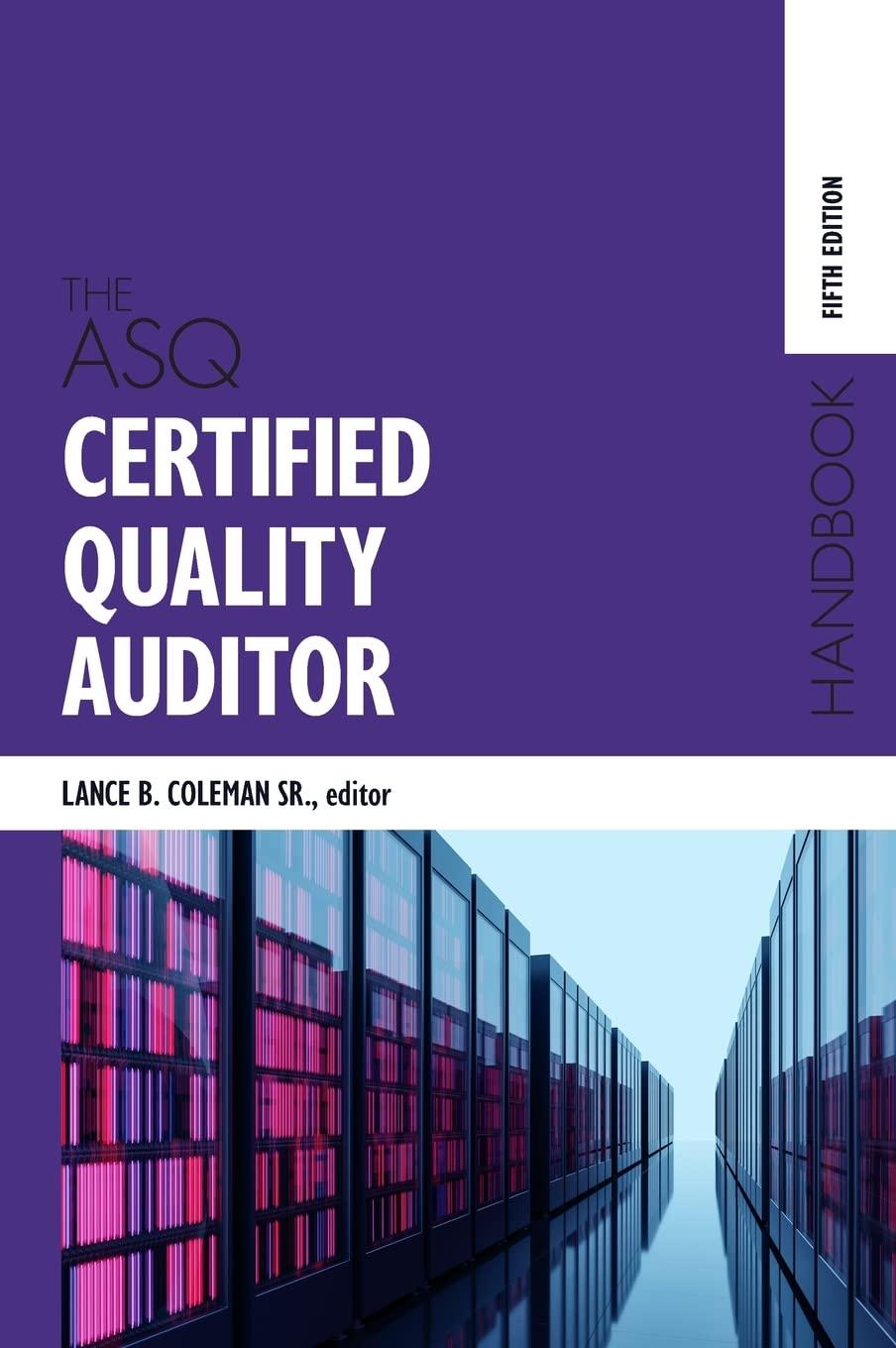Answered step by step
Verified Expert Solution
Question
1 Approved Answer
QUESTION TO ANSWER: 7. The class action lawsuit against Andersen also named the Canadian Imperial Bank of Commerce, JPMorgan Chase, Citigroup, Merrill Lynch, and Credit






QUESTION TO ANSWER:
7. The class action lawsuit against Andersen also named the Canadian Imperial Bank of Commerce, JPMorgan Chase, Citigroup, Merrill Lynch, and Credit Suisse Group as codefendants with Andersen. Why would the plaintiffs name so many entities in their lawsuit? Merrill Lynch and Credit Suisse asked a U.S. appeals court to rule that the complaint should not have been certified as a class action suit. Why would these entities make such a claim?
PROBLEM Most students are familiar with Arthur Andersen as a CPA firm that failed to detect fraudulent financial activities in the audits of several companies including Sunbeam, Waste Management, Enron, and WorldCom. Although much has been written about the quality of these audits and how increasing the firm's revenues from both audit and nonaudit services may have supplanted audit quality as the main objective of Andersen as a firm, we should not lose sight of the facts that led to Andersen's demise and the findings that have occurred since Andersen ostensibly closed its doors as an audit and accounting rm In effect, Andersen had already received the maximum penalty even before the trial began. Once Anderson had been indicted, most of its clients had decided that an audit by a firm under indictment would be of little value even if allowed by the Securities and Exchange Commission (SEC). During the shareholder proxy season in early 2002, company after company announced it would no longer retain Andersen as its auditor. Whether the firm was able to defend itself or not, the days of Andersen as a viable audit firm had come to an end ANDERSEN GOES TO TRIAL In May 2002, Arthur Andersen LLP was tried for obstruction of justice in connection with the destruction of documents during a time period prior to a formal SEC investigation of Enron, one of Andersen's largest clients. The main witness for the prosecution was David Duncan, a former Andersen partner in charge of the Enron audit, who had already pleaded guilty to obstruction of justice. The guilt or innocence of Andersen hinged on the question of corporate direction. If Duncan had acted illegally on his own in an effort to save himself from consequences resulting from an SEC investigation of Enron, then Andersen as a firm would not likely be found guilty of obstructing justice. However, if Duncan had acted illegally on the direction of Andersen's management within the scope of his position in an attempt to save Andersen from the consequences of Enron, the firm as a whole would be held liable. Therefore, the issues to be determined were (1) whether illegal acts had been committed and (2) if they had been committed on behalf of Duncan or on behalf of Andersen The Prosecution's Case The chief prosecutor for the government was Samuel Buell. The main points in Buell's case follow: Top partners in Arthur Andersen's Chicago office had permitted Enron to use aggressive accounting practices that were very questionable given the nature of Enron's business In late September through early October 2001, Andersen's legal department had begun creating a strategy designed to protect Andersen from regulators and litigants A major part of the strategy was to invoke Andersen's document retention policy, which according to prosecutors, was an obscure policy that its employees seldom read or followed on its audits. In addition, the policy had been revised in 2000 by an Andersen partner who had been disciplined by the SEC for his involvement in the Waste Management audits. According to Buell management had known that invoking the policy would lead to the destruction of "tons of papers and tens of thousands of computer files" that would be of interest to investigators.1 The prosecution presented notes from an October 9 conversation between Nancy Temple, Andersen's legal counsel, and attorneys in Andersen's legal department. This conversation indicated that Temple had believed an SEC investigation was imminent and that such an investigation couldStep by Step Solution
There are 3 Steps involved in it
Step: 1

Get Instant Access to Expert-Tailored Solutions
See step-by-step solutions with expert insights and AI powered tools for academic success
Step: 2

Step: 3

Ace Your Homework with AI
Get the answers you need in no time with our AI-driven, step-by-step assistance
Get Started


